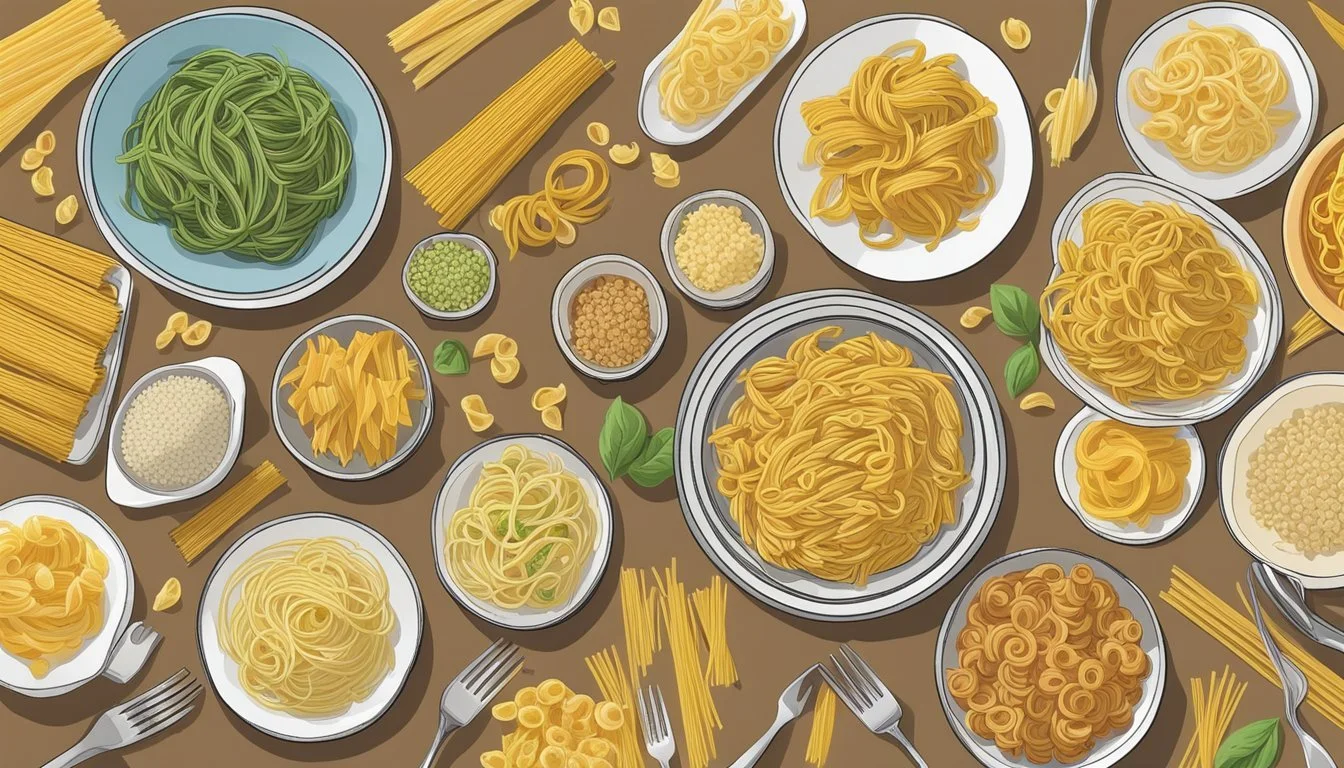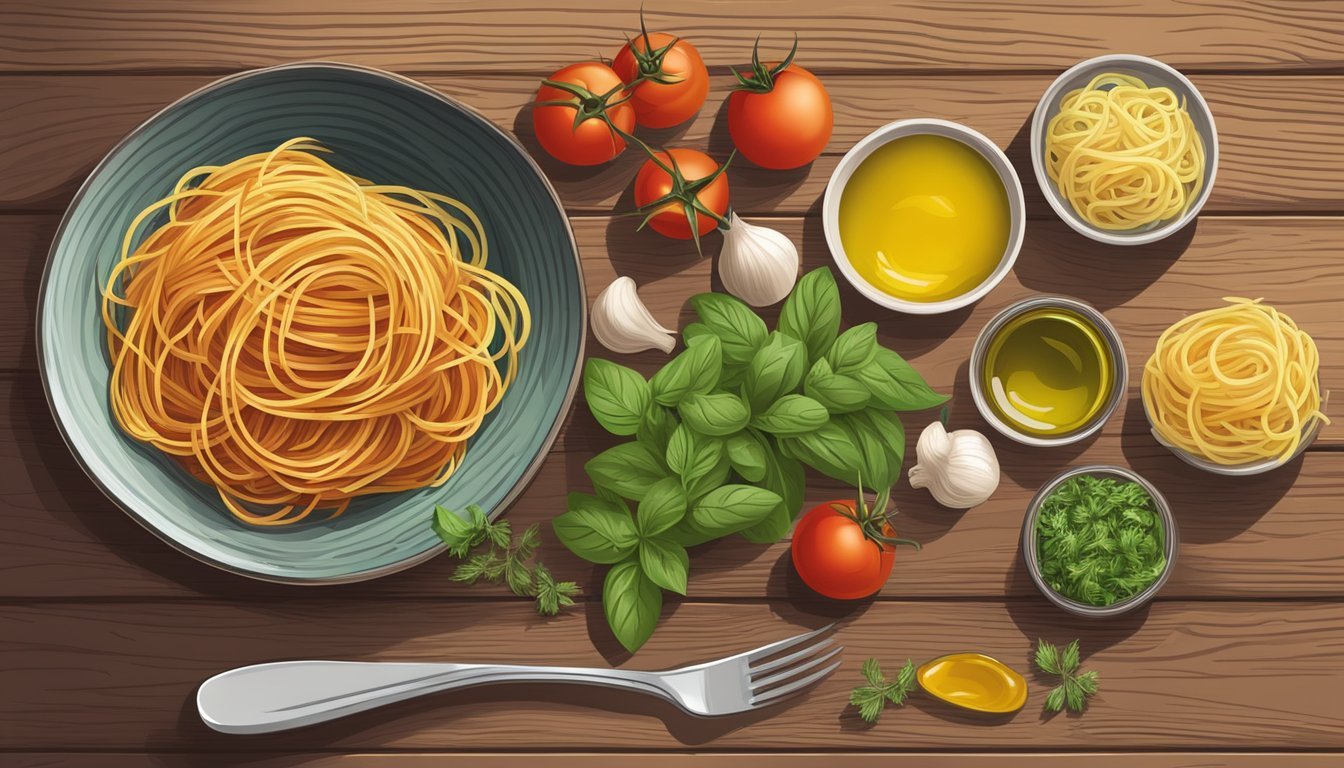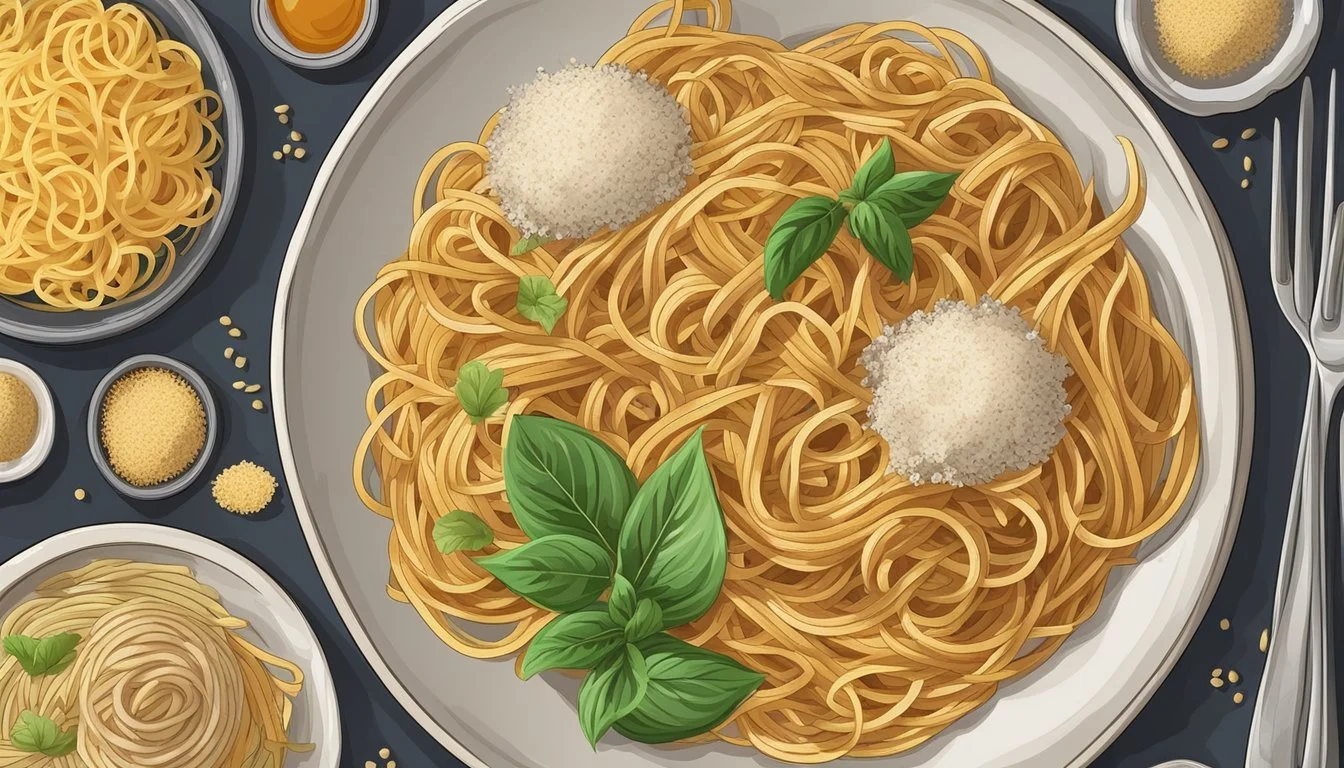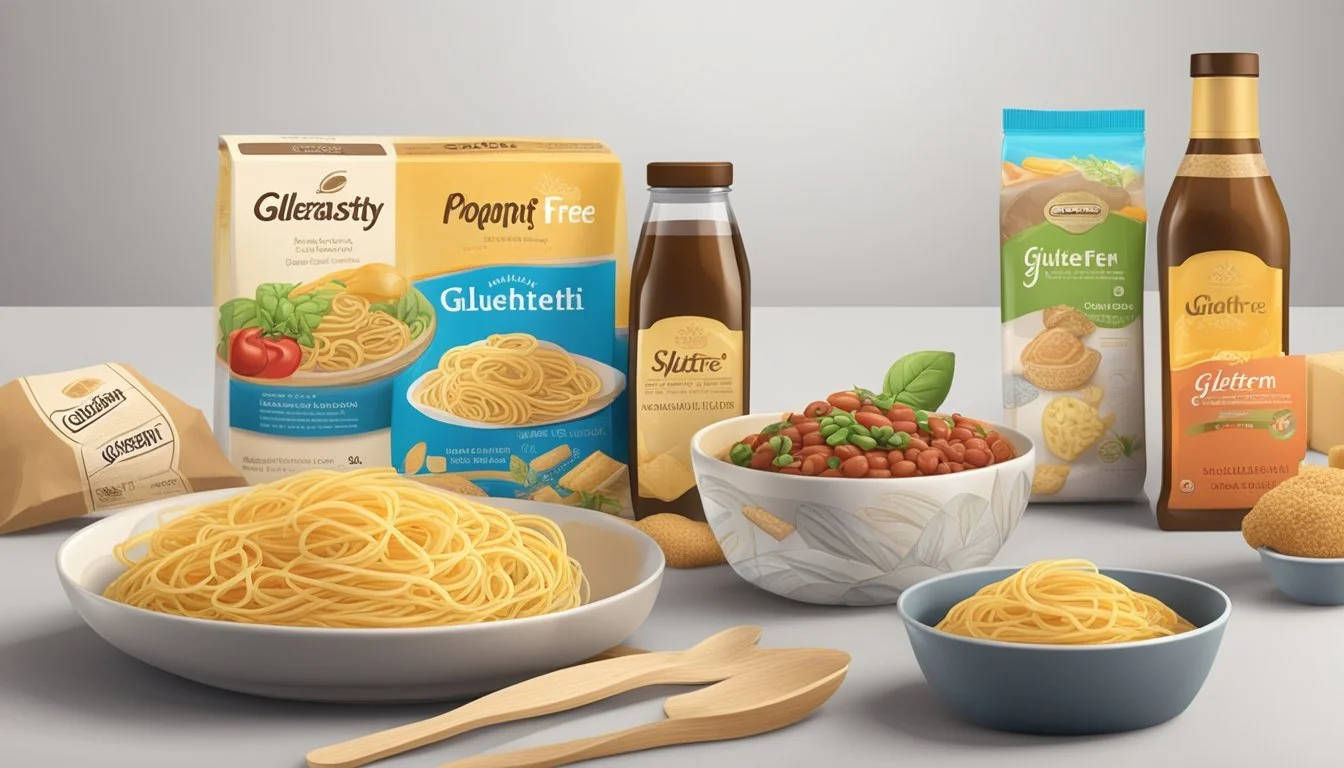Is Spaghetti Gluten-Free?
Understanding Pasta Choices for Celiac Dieters
Traditional spaghetti, a popular Italian dish, is typically made from wheat flour which contains gluten. Gluten is a protein found in wheat, barley, and rye, and for individuals with celiac disease or gluten sensitivities, consuming it can lead to various health issues. Therefore, regular spaghetti made from wheat is not a suitable option for those following a gluten-free diet.
Fortunately, with the rise in awareness of gluten-related disorders, there are several alternatives to wheat-based spaghetti that are gluten-free. The market now offers pasta (What wine goes well with pasta?) made from a variety of gluten-free ingredients such as corn, rice, quinoa, (What wine goes well with quinoa?) and chickpeas. These alternatives aim to replicate the taste and texture of traditional pasta, making them an enjoyable substitute for people avoiding gluten.
Gluten-free spaghetti products have become more accessible, with many grocery stores and online retailers carrying a range of brands. These gluten-free options are often certified to ensure they are free from cross-contamination with gluten-containing products, providing peace of mind for those sensitive to gluten. The availability of gluten-free spaghetti allows individuals with dietary restrictions to enjoy a classic pasta dish without compromising their health or flavor preferences.
Understanding Gluten in Pasta
In the context of pasta, understanding the role of gluten is pivotal for those with gluten-related health conditions. This section offers insights on what gluten is and its relationship to celiac disease.
What Is Gluten?
Gluten is a group of proteins, predominantly gliadin and glutenin, found in various grains, including wheat, barley, and rye. It is responsible for the elasticity and chewiness of dough. In pasta-making, gluten plays a crucial role in achieving the desired texture and structure. Most traditional pasta is made from wheat flour and therefore contains gluten.
Gluten and Celiac Disease
Celiac disease is an autoimmune disorder triggered by ingesting gluten, leading to damage in the small intestine. Individuals with celiac disease must adhere to a strict gluten-free diet to manage their symptoms and prevent long-term health complications. Gluten sensitivity also necessitates the avoidance of gluten, albeit without the autoimmune response seen in celiac disease. For these individuals, consuming gluten-free pasta, made from alternative grains such as rice or corn, is essential to maintain a healthy diet free from adverse reactions.
Types of Gluten-Free Pasta
Gluten-free pasta has come a long way, offering a variety of options for those with gluten sensitivities or celiac disease. These pasta alternatives are made using alternative grains and legumes to provide a similar texture and taste to traditional wheat pasta.
Rice-Based Pasta
Brown rice pasta is a commonly sought-after gluten-free pasta alternative due to its mild flavor and familiar texture that resembles that of traditional pasta. Made from brown rice, it provides a chewy experience and is versatile for various dishes. Another rice-based option is white rice pasta, which is lighter in color and has a softer texture.
Ingredients: Often just brown or white rice and water.
Texture and flavor: Chewy, with a neutral flavor.
Legume-Based Pasta
Legume-based pastas are made from beans and lentils, making them rich in protein and fiber. Chickpea pasta is amongst the most popular in this category, loved for its nutritional benefits and firm texture. Other varieties include pasta made from lentils, yellow peas, or a blend of different beans.
Ingredients: Chickpeas, lentils, or other legumes.
Benefits: High in protein and fiber, maintaining a firm texture after cooking.
Other Gluten-Free Alternatives
Aside from rice and legumes, there are other gluten-free pasta alternatives that cater to different preferences and health requirements:
Quinoa pasta: Made from quinoa, this pasta is known for its protein content and essential amino acids.
Corn pasta: Ideal for those who enjoy a slightly sweeter flavor profile compared to wheat pasta.
Almond flour pasta: With a nutty flavor, this pasta is perfect for those looking for a grain-free option.
Nutrient profile: Varies, but generally high in proteins and fibers.
Application: Suitable for a vast range of recipes from various cuisines.
Gluten-Free Spaghetti Options
Gluten-free spaghetti provides those with dietary restrictions the opportunity to enjoy this classic dish. Manufacturers are meeting the demand with an array of store-bought varieties, while recipes for homemade alternatives expand the choices further.
Store-Bought Gluten-Free Spaghetti
Barilla Gluten Free Pasta: Barilla, widely recognized in the pasta market, offers a gluten-free spaghetti that is a blend of non-GMO corn and rice. Their gluten-free product maintains a classic taste and texture, and is a popular choice for its reliability and wide availability.
Jovial: Jovial specializes in gluten-free pasta made from brown rice. Their spaghetti is organic, non-GMO, and is praised for its taste and texture akin to traditional wheat pasta. It stands out for its artisanal approach and heirloom varieties of rice.
Other noteworthy products include gluten-free spaghetti made from a variety of alternative flours:
Corn: Resilient in texture, often with a mild, sweet flavor.
Brown Rice: Tends to hold shape when cooked appropriately.
Quinoa: Offers a solid texture and is rich in protein.
Lentil: Provides a firmer bite and additional nutritional benefits.
Homemade Gluten-Free Spaghetti
For those who prefer homemade spaghetti, one can make their own using gluten-free flour blends available in the market. These blends might include rice flour, tapioca starch, or even almond flour for a nutrient-rich option. Xanthan gum is often added to improve the pasta's elasticity. Homemade pasta allows for customization in flour choice and flavor additions, making it suitable for specific dietary needs and taste preferences.
Health Considerations
When analyzing the health implications of gluten-free spaghetti, one should focus on the nutritional differences and the specifics relating to fiber content and glycemic index. These factors are critical for individuals with dietary restrictions or those seeking a healthier pasta alternative.
Nutritional Differences
Gluten-free spaghetti is typically made from a variety of alternative flours such as rice, corn, or quinoa. These ingredients result in a pasta that often has a different nutritional profile compared to traditional wheat-based spaghetti. Many gluten-free pastas are enriched to offer comparable levels of vitamins and minerals. However, protein content can vary, with some gluten-free options offering less protein than their wheat counterparts unless they are made with high-protein ingredients like legumes.
Fiber Content and Glycemic Index
The fiber content in gluten-free spaghetti can differ significantly based on the type of flour used. For example, pastas made from legumes such as lentils or chickpeas tend to be higher in fiber, while those using rice flour might be lower. A higher fiber content is beneficial for digestion and can contribute to a feeling of fullness.
The glycemic index (GI) measures how quickly foods raise blood sugar levels. Gluten-free pasta made from refined flours might have a higher GI, whereas those made from whole grains or legumes typically have a lower GI. A lower GI is associated with a slower release of energy, which can be more beneficial for blood sugar management.
Flour Type Estimated Fiber Content Estimated Glycemic Index Brown Rice Flour Moderate High Legume Flour High Low Corn Flour Low-Moderate Moderate-High Almond Flour High Low
Consumers looking for gluten-free spaghetti with a lower glycemic index should opt for those made from legumes or nut flours. These options are also likely to provide more fiber and potentially a higher protein content, contributing to a more balanced diet.
Cooking Tips and Techniques
When preparing gluten-free spaghetti, one must consider nuances that affect both texture and flavor. Optimal cooking techniques and sauce pairings are fundamental to elevating the taste of gluten-free pasta dishes.
Preparing Gluten-Free Spaghetti
For the best results, one should start with a large pot of water, adding roughly 6 liters of water per pound of pasta. This allows the pasta enough room to move and reduces the chances of it becoming sticky. Adding salt to the boiling water is essential, with a general guideline being two tablespoons of kosher salt per gallon of water. It’s important to note that gluten-free spaghetti may cook more quickly or require more attention than traditional pasta to avoid a mushy texture. Therefore, cooking times indicated on the packaging should be used as a guide, with periodic testing for doneness.
Boil: A large pot of salted water.
Cooking Time: Follow package instructions but test often.
Salt: Essential for flavor, adjust according to taste and dietary requirements.
Texture: Prevent mushiness through attentive cooking, draining well post-cooking.
Sauce Pairings and Flavor Enhancement
A conscious selection of sauces and spices can greatly improve the overall enjoyment of gluten-free spaghetti. Tomato sauce is a classic choice that pairs well with this type of pasta. When making a tomato sauce, one can infuse it with various herbs to enhance the flavor. Common herbs include basil, oregano, and garlic. For a richer taste, a homemade or high-quality jarred pasta sauce can be used as the base, and then personalized with additional spices such as pepper and other preferred seasonings to taste.
Classic Tomato Sauce: Enriched with herbs like basil and oregano.
Garlic: For a robust flavor profile.
Personalization: Add preferred spices to tailor the sauce to one's liking.
Quality: Choose high-quality sauces or make homemade for the best flavors.
Selecting the right sauce and mastering the cooking process are key in highlighting the unique qualities of gluten-free spaghetti, ensuring a satisfying culinary experience.
Exploring Gluten-Free Cuisine
The gluten-free dietary movement has transformed Italian cuisine, offering delicious alternatives for those with gluten sensitivities or preferences. These alternatives provide the classic comfort of Italian dishes without compromising on taste or texture.
Gluten-Free Italian Dishes
Italian cuisine is renowned for its rich and diverse pasta dishes, but traditional pasta contains gluten, a protein found in wheat. Innovations in gluten-free cuisine have led to the creation of gluten-free spaghetti, lasagna, ravioli, tortellini, and fettuccine, allowing individuals with gluten intolerance to savor these classic dishes.
Spaghetti: Gluten-free versions are typically made from rice, corn, or quinoa flour.
Lasagna: Layers of gluten-free lasagna noodles are available, transforming this comfort dish into a safe option.
Ravioli & Tortellini: Filled pastas can be made with gluten-free dough and stuffed with various cheese, meats, or vegetables.
Fettuccine: Known for its thick and flat shape, gluten-free fettuccine maintains the texture necessary to hold robust sauces.
Creative Gluten-Free Combinations
Embracing gluten-free ingredients paves the way for novel and creative combinations that cater to both vegan and non-vegan preferences.
Gnocchi: Can be made from potatoes or other gluten-free flours, offering a chewy and satisfying alternative.
Comfort Food: Gluten-free pasta can be the base for comforting dishes, enhanced with hearty sauces and toppings.
One can experiment with different gluten-free flours and binders to create a pasta that suits their taste and dietary requirements, thus preserving the integrity of beloved Italian cuisine.
Choosing Gluten-Free Products
Selecting the right gluten-free products, especially pasta, involves looking for trusted brands and being vigilant about reading labels. Gluten-free alternatives have become a pantry staple for many, and knowing which brands deliver both on taste and texture is essential.
The Best Gluten-Free Pasta Brands
Barilla and Jovial are among the top contenders for those seeking the best gluten-free pasta. Barilla offers a variety of gluten-free options made from white and yellow corn flour and rice flour, providing a taste and texture similar to traditional pasta. Jovial crafts their pasta from organic brown rice flour, which is favored for its consistency and flavor.
Zenb is noted for using yellow peas in their pasta, making it rich in protein and fiber. Another notable brand is Andean Dream, which uses organic rice and quinoa flours in their spaghetti, offering a good balance of taste and nutritional value.
For those who favor alternatives, Banza's pasta made from chickpeas provides a high protein and fiber content, with additional ingredients like tapioca, pea protein, and xanthan gum to maintain a pleasant texture.
Reading Labels and Identifying Hidden Gluten
When shopping for gluten-free pasta, it is crucial to read labels thoroughly. Hidden sources of gluten can appear in the form of additives or flavorings. A useful tip is to look for certifications or labels that clearly state the product is gluten-free.
One should always look for terms such as "wheat," "barley," "rye," and "malt," as these indicate the presence of gluten. It is also advisable to avoid products which state they are processed in a facility that also processes wheat, as cross-contamination is a possibility. By keeping an eye out for these details, consumers can confidently enjoy safe gluten-free products.
Living Gluten-Free
When adopting a gluten-free lifestyle, individuals need to reassess their meal strategies and social dining habits. A focus on gluten-free options that are budget-friendly and incorporate a variety of alternative foods, such as salads and different types of gluten-free noodles, can make this transition smoother.
Gluten-Free Meal Planning
Creating a gluten-free meal plan requires an understanding of suitable ingredients and alternatives. Individuals often resort to staples such as salad, which can be served with a range of gluten-free toppings and dressings. Salads are not only healthy but also budget-friendly. Another valuable addition to the gluten-free pantry is alternative noodles like zucchini noodles, which serve as an excellent pasta substitute, along with soba noodles made from buckwheat and shirataki noodles derived from the konjac yam. These noodle options vary in texture and flavor, providing diversity for the palate while maintaining a strict gluten-free diet.
Gluten-Free Noodles Base Ingredient Budget-Friendly Notes Zucchini Noodles Zucchini Yes Fresh and versatile, can be served hot or cold Soba Noodles Buckwheat Moderate Ensure the soba is 100% buckwheat Shirataki Noodles Konjac Yam Fiber Yes Very low in calories, different texture
Navigating Social and Dining Out Challenges
Dining out or attending social events while maintaining a gluten-free diet requires one to be forthright and investigative. Restaurants and social hosts should be contacted ahead of time to discuss gluten-free offerings. It’s important for individuals to clearly communicate their dietary restrictions to ensure their needs are met. When in doubt, they may opt for a safe choice like a salad, asking for the dressing to be served on the side or for confirmation that it's gluten-free. Another good practice is to look for menu items that naturally contain no gluten, such as dishes crafted around zucchini noodles or other gluten-free alternatives. This proactive approach helps maintain a gluten-free diet without compromising on social engagements.
Frequently Asked Questions
Is all spaghetti gluten-free?
No, traditional spaghetti is made from wheat flour which contains gluten. One needs to specifically look for gluten-free spaghetti, which is made from alternative flours like rice, corn, cassava, or buckwheat.
Can I pair gluten-free spaghetti with all types of sauces?
Yes, gluten-free spaghetti pairs well with a variety of sauces. Whether one prefers a rich tomato sauce, a light olive oil dressing, or sauces with ground beef or ground turkey, they can be enjoyed with gluten-free pasta as long as other ingredients are also gluten-free.
What are gluten-free spaghetti options made from?
Gluten-free spaghetti may be made from a range of flours such as rice, corn, quinoa, buckwheat flour, or even legume flours. For those who prefer grain alternatives, products made from cassava offer a suitable option.
How can one avoid overcooking gluten-free pasta?
To avoid mushy gluten-free spaghetti, one should follow the specific instructions on the package and check pasta frequently during cooking. It tends to cook faster and requires a shorter cooking time compared to whole grain or Italian pasta.
Is there a difference in nutrients between gluten-free and regular pasta?
Gluten-free pasta often lacks some of the nutrients found in whole grain pasta, such as fiber and B vitamins. However, some gluten-free pastas are fortified with nutrients like iron and folic acid. Reading the nutritional label is crucial for information.
Does gluten-free spaghetti taste different?
The taste can differ slightly due to the alternative ingredients used. However, when cooked properly and paired with favorite sauces and ingredients like parmesan cheese and tomatoes, gluten-free spaghetti can be just as satisfying as its wheat-based counterpart.
Conclusion
When considering whether spaghetti is gluten-free, one must assess the ingredients. Traditional spaghetti is made from wheat flour, which contains gluten. Therefore, regular spaghetti is not gluten-free. However, there is a wide range of gluten-free spaghetti options available on the market. These are made from alternative flours such as rice, corn, or quinoa.
Gluten-free spaghetti can be just as delicious as its wheat-based counterpart. It is important to note that while gluten-free pasta may differ in texture and flavor, many find it an acceptable and tasty alternative. With the rising popularity of gluten-free diets, manufacturers have improved their recipes to better mimic the taste and feel of traditional pasta.
For those with celiac disease or non-celiac gluten sensitivity, checking labels is crucial. Brands like Cento and Heinz offer gluten-free pasta sauce options, making it easier for consumers to enjoy a fully gluten-free spaghetti dish.
In summary, spaghetti can fit into a gluten-free diet if one chooses pasta made from gluten-free ingredients. Always read labels for confirmation that the product is free from gluten and remember to pair it with gluten-free sauces to create a meal that is safe and enjoyable for those avoiding gluten.










